| Butterfly | Host plant |
Chocolate Pansy ---khew-sk.jpg?sfvrsn=c82c9667_1)
Photo credit: Khew Sin Khoon The Chocolate Pansy (Junonia hedonia) has orangey brown wings, while its underside is of a duller brown with dark stripes traversing across the wings, almost resembling leaves allowing it to camouflage well in leaf litter.
It flies in a gliding manner and tends to sunbathe with its wings wide open in sunny weather. It is about 5 to 6 cm in length.
| Creeping Ruellia 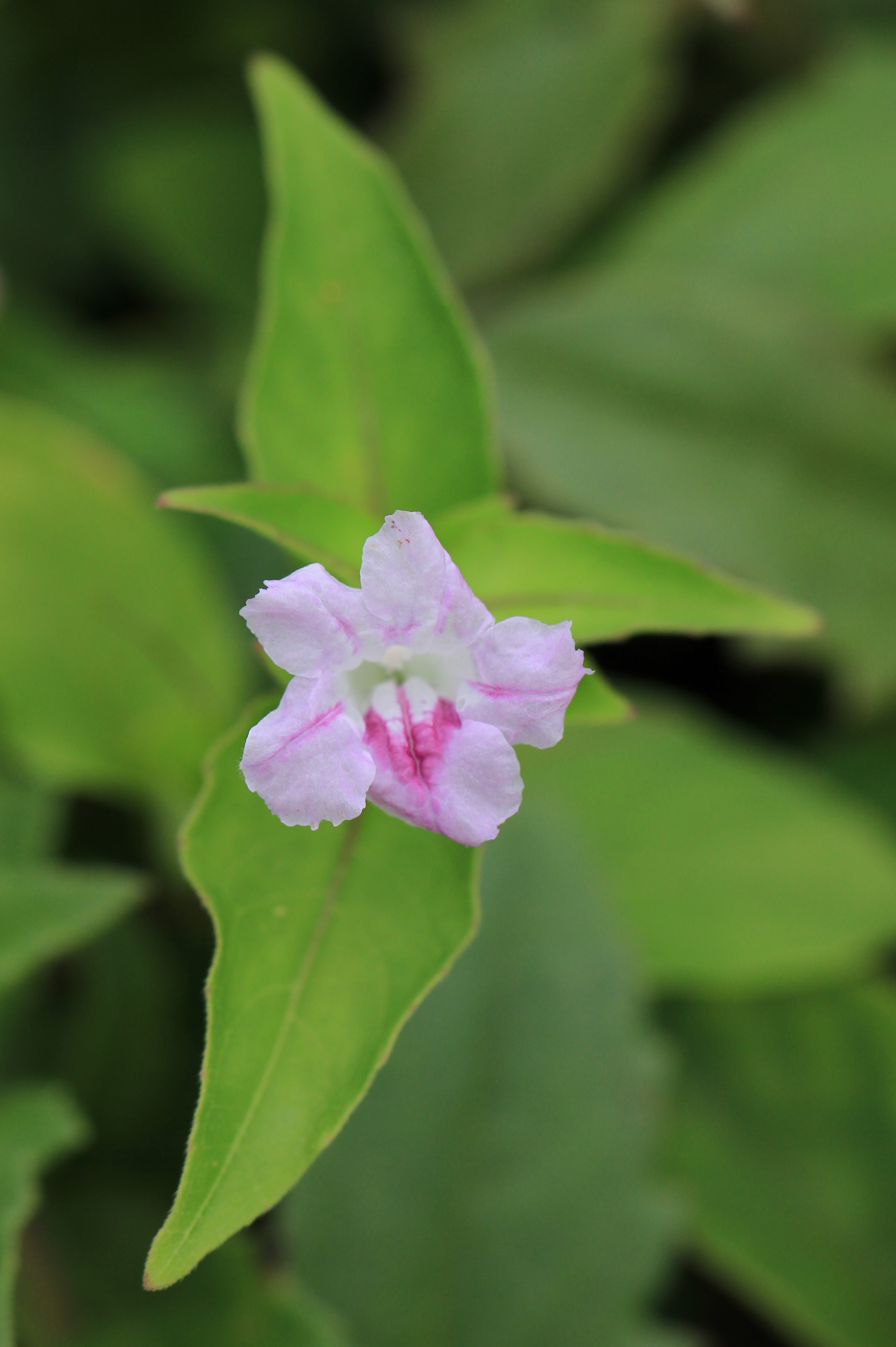
Photo credit: Vicky Lim Yen Ngoh The Creeping Ruellia (Ruellia repens) is a small, creeping herb from the Acanthus family that can grow up to 50 cm tall. It is easy to grow, with small pretty funnel-shaped flowers that are white or pink to light purple in colour.
It is also the host plant for the Peacock Pansy (Junonia almana javana) and the Pygmy Grass Blue (Zizula hylax pygmaea).
|
Common Grass Yellow 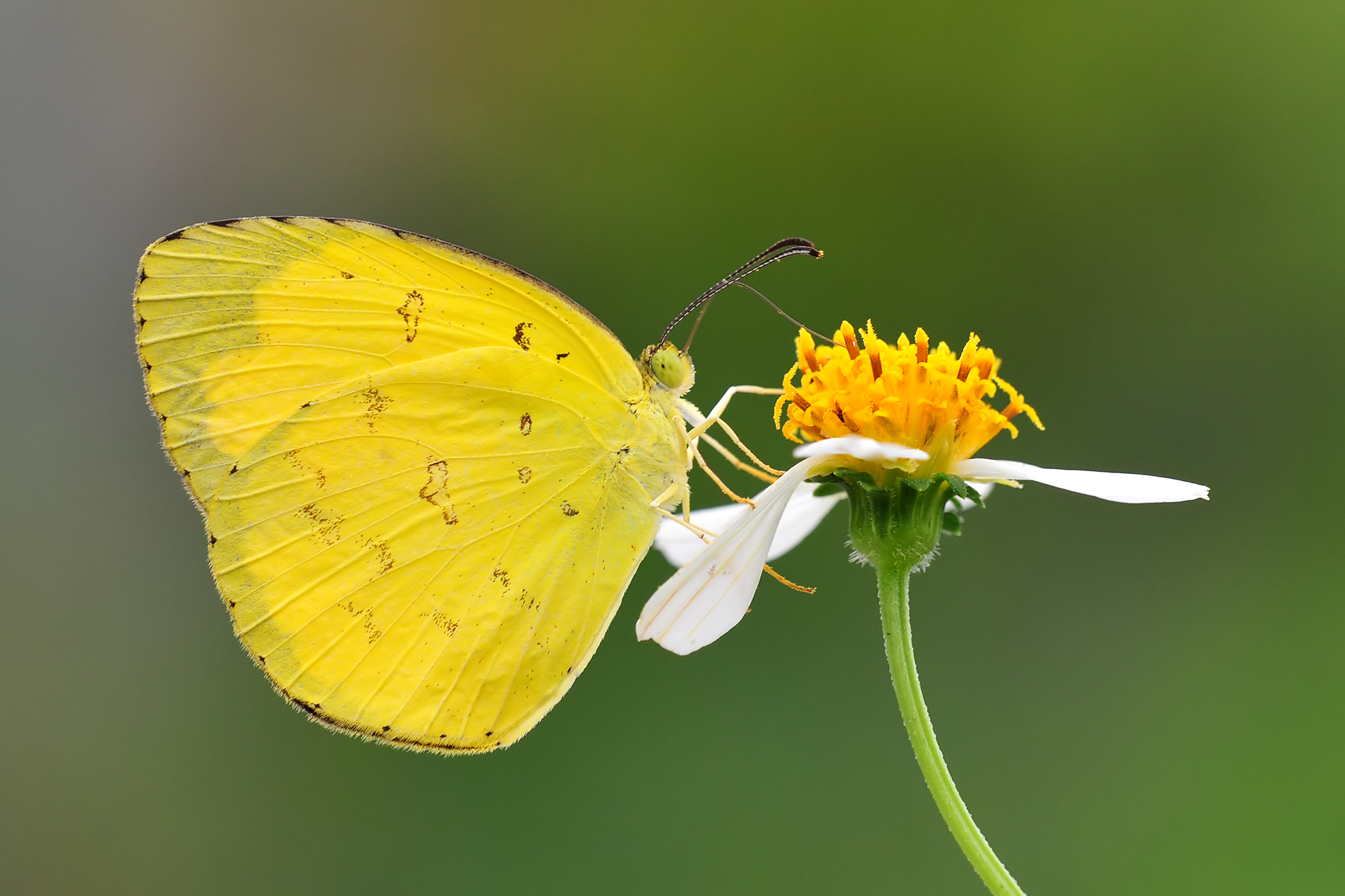
Photo credit: Khew Sin Khoon You can easily spot this butterfly with its bright lemon-yellow wings. Look closely – you can find tiny black dots dispersed all over its wings.
The Common Grass Yellow (Eurema hecabe), measuring about 3.5 to 4.5 cm, is one of six species from the genus Eurema. It tends to fly restlessly and is on alert when approached.
| Peacock Flower 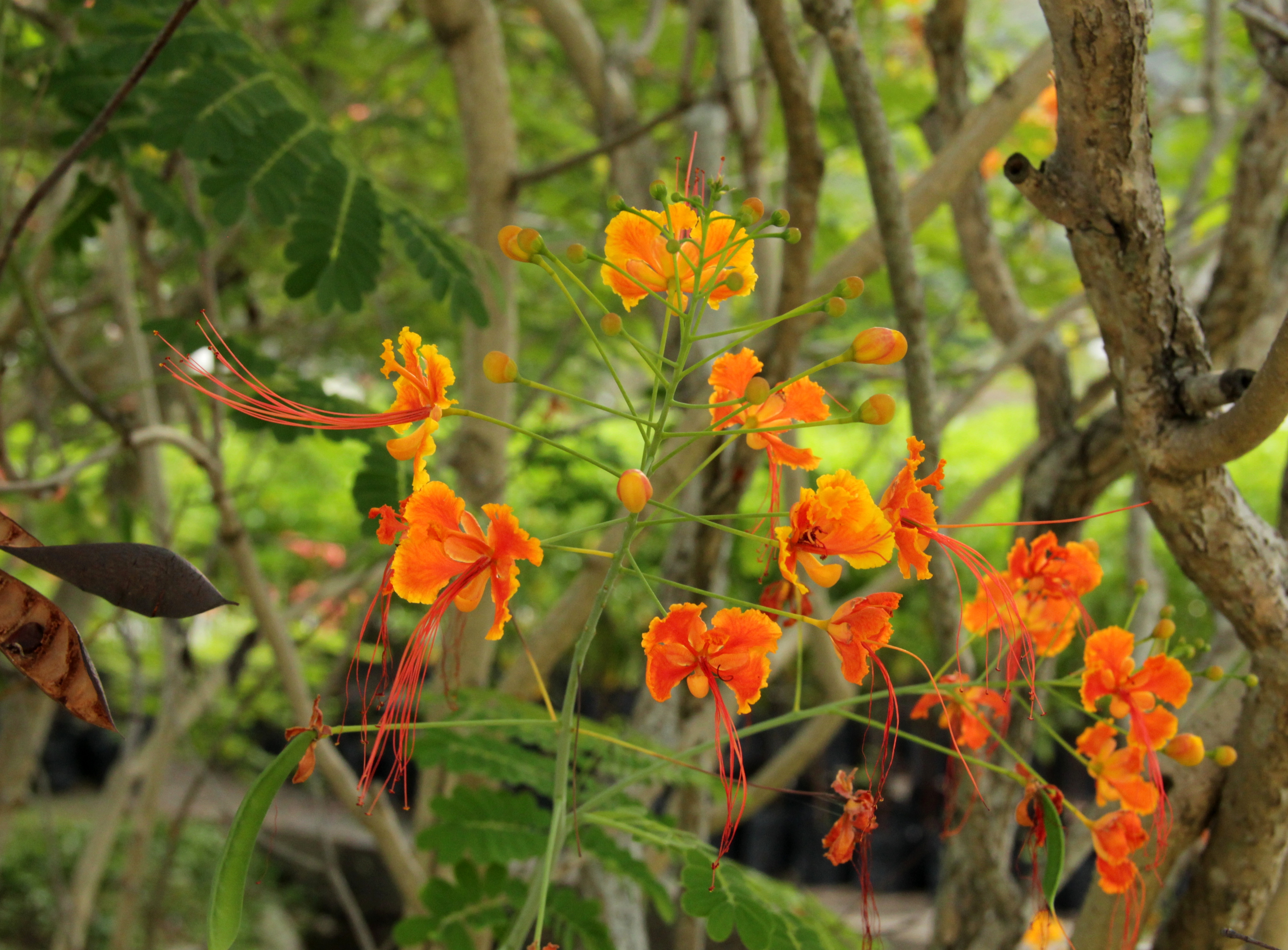
Photo credit: Arthur Ng The Peacock Flower (Caesalpinia pulcherrima) is an attractive shrub bearing yellow, orange or red flowers borne in clusters.
It grows easily in fertile loamy soils, propagated by seeds. As a shrub, it can grow up to 3 to 6 m in height and can flower throughout the year. It is recommended to do hard pruning annually to retain the vigour of the plant.
|
Common Mormon 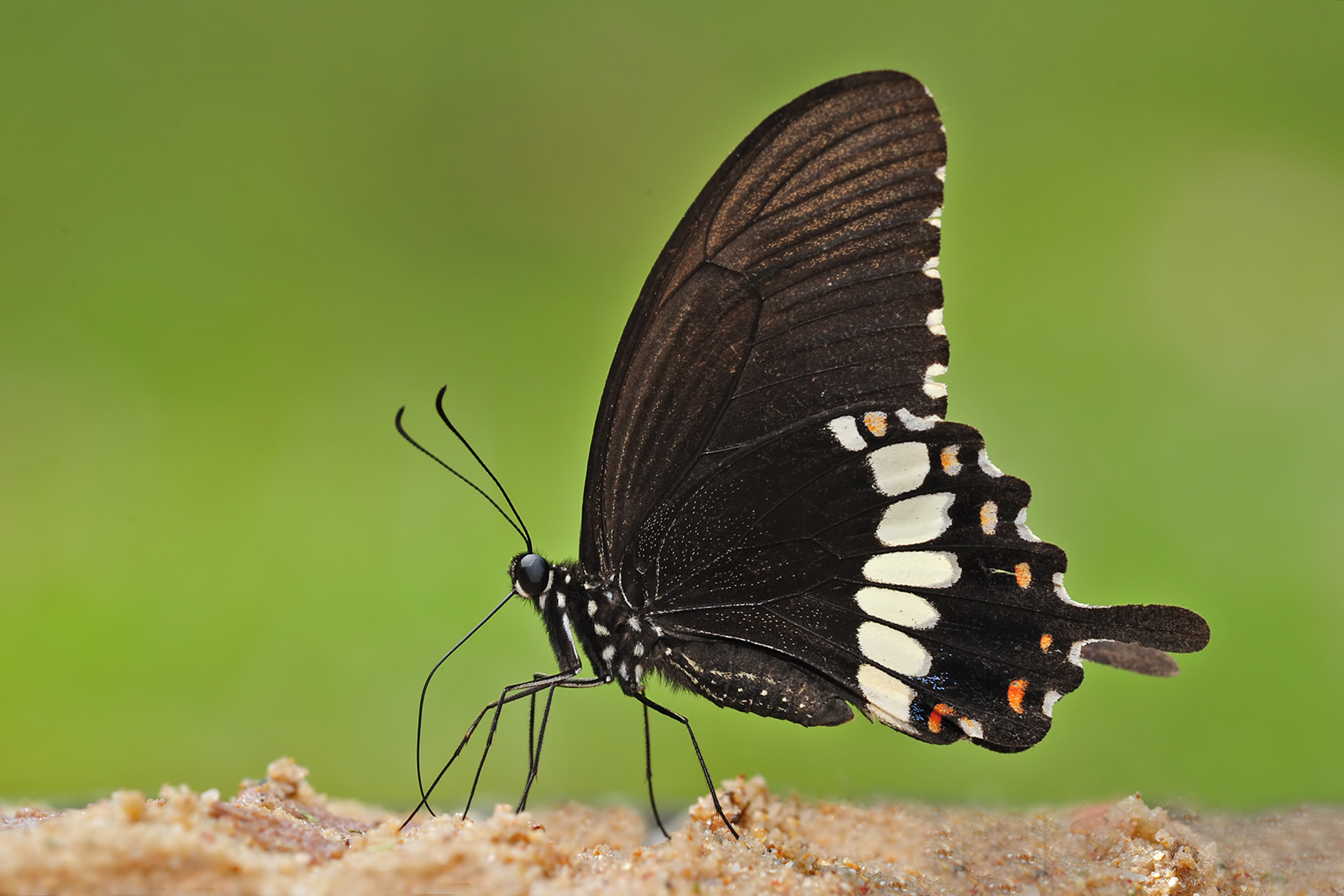
Photo credit: Khew Sin Khoon The Common Mormon (Papilio polytes) measures to about 8 cm and belongs to a group of butterflies called swallowtails and they are known for their long tails that extend from their hindwing.
The males are black on the upperside with a series of large whitish-yellow spots while the females can take several forms. Some look almost indistinguishable from the males while others mimic the poisonous Common Rose butterfly with red spots near the hindwing margin to protect itself from predators.
| Indian Curry Leaf 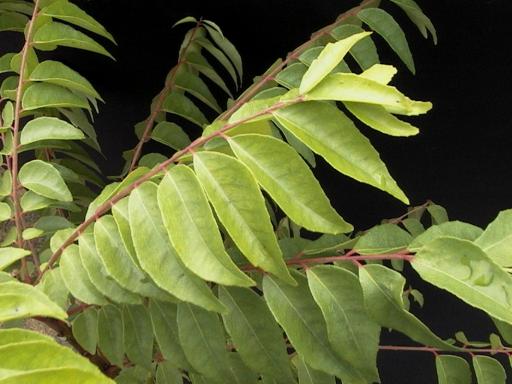
Photo credit: Boo Chih Min The Indian Curry Leaf (Murraya koenigii) is an aromatic herb you can use in your curry dishes. It prefers warm humid climates and hence it thrives in Singapore. It can be grown in well-drained soil in small gardens or within a container, reaching up to 2.5 m in height.
It can be propagated by seeds – sow its seeds immediately after harvesting. It seeds are viable up to three weeks.
|
Lesser Grass Blue 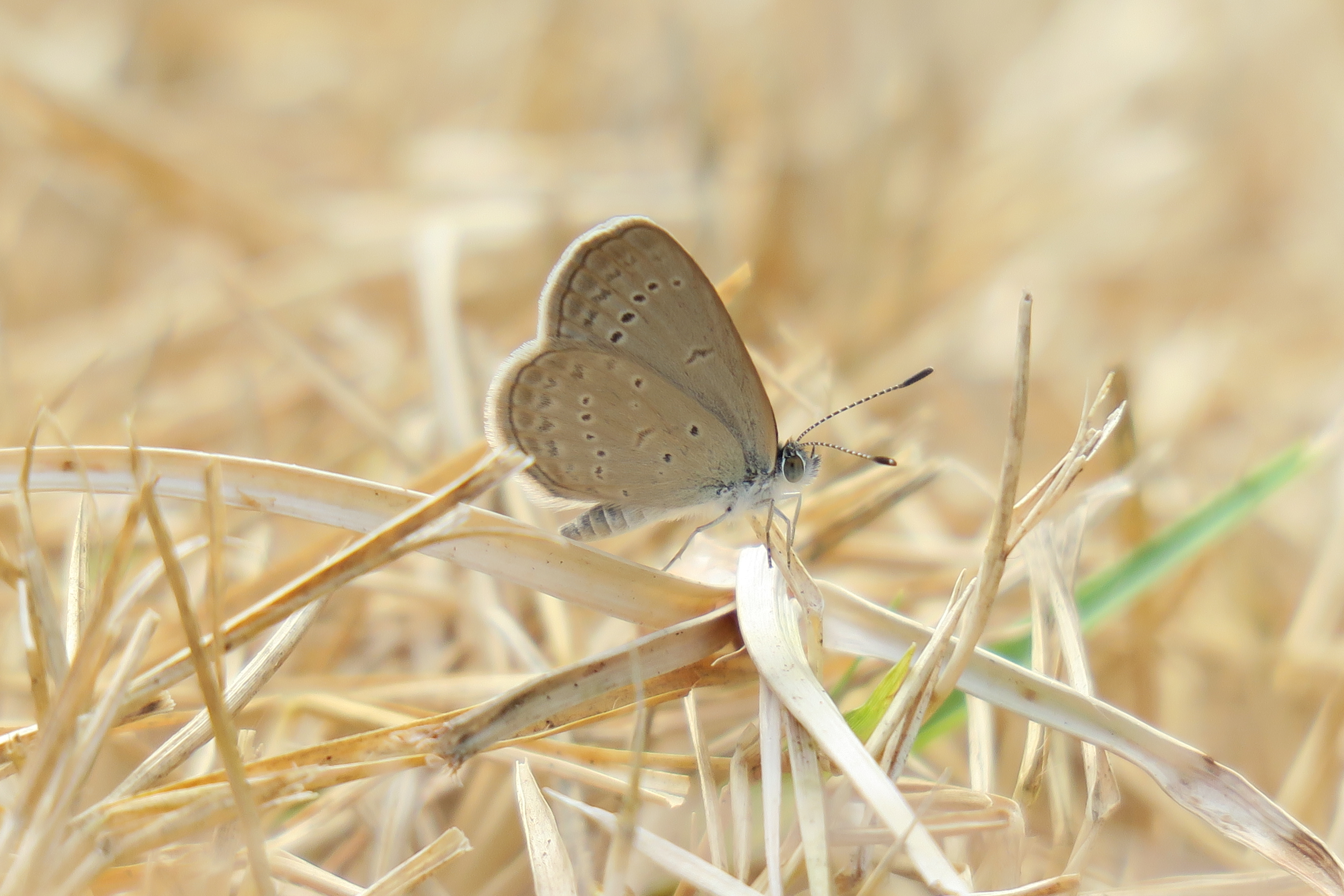
Photo credit: Soh Kam Yung The Lesser Grass Blue (Zizina otis) has dull purplish blue wings with a grey underside.
Singapore has three Grass Blue species that are hard to tell apart due to their small size (they measure only 0.8 to 2 cm) and erratic flight. Besides the commonly spotted Lesser Grass Blue and Pygmy Grass Blue (Zizula hylax), the Pale Grass Blue (Zizeeria maha) is less often spotted.
| Spanish Clover 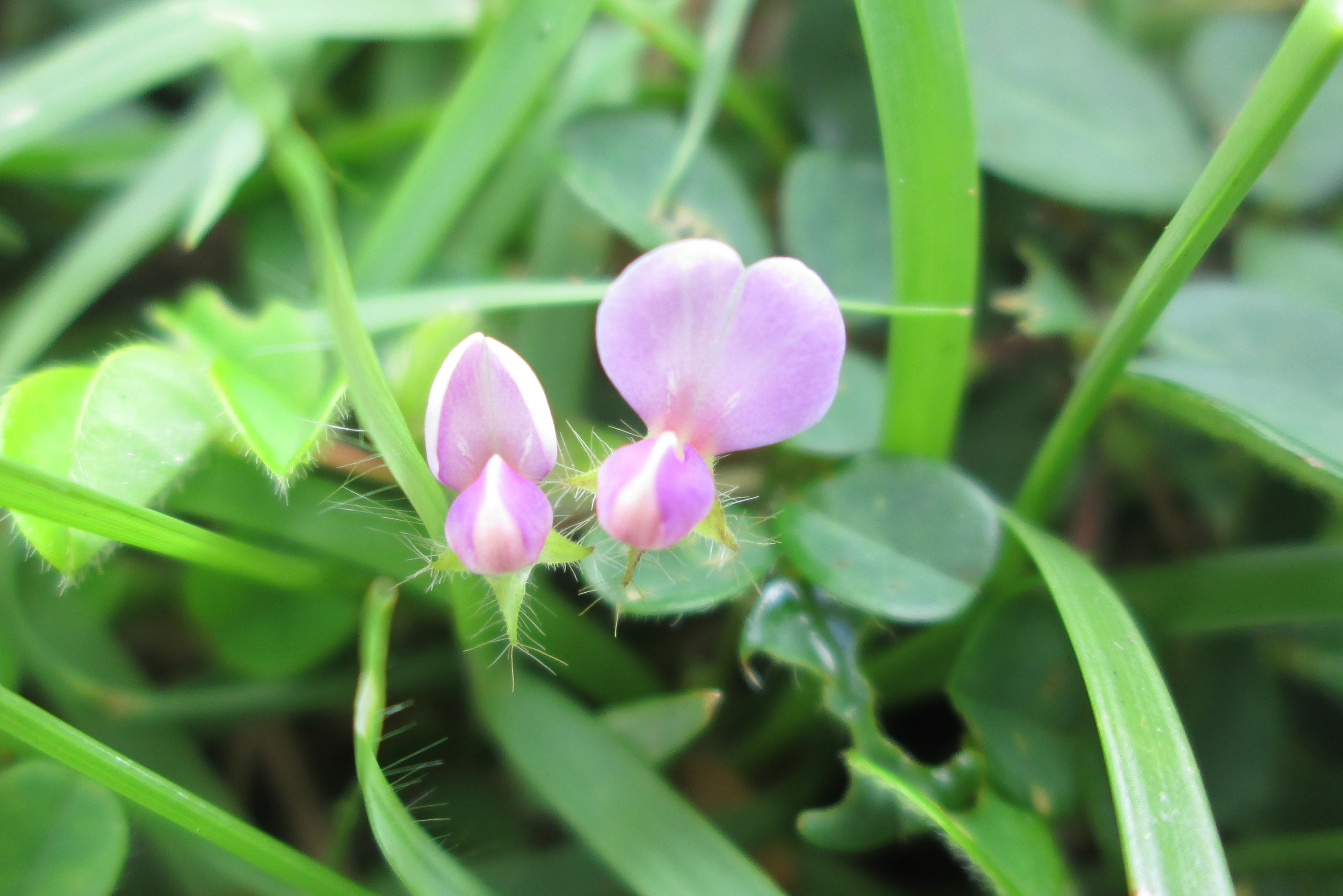
Photo credit: Ying Wei Jong The Spanish Clover (Desmodium heterophyllumI) is a tropical legume with small pink pea-liked flowers that grow up to only about 0.5 cm.
It grows well in full sun and little water conditions and is also known for its medicinal properties and is used in various ways by different cultures to treat ailments.
Please consult your physician before using or consuming any plants for medicinal purposes.
|
Lime Butterfly 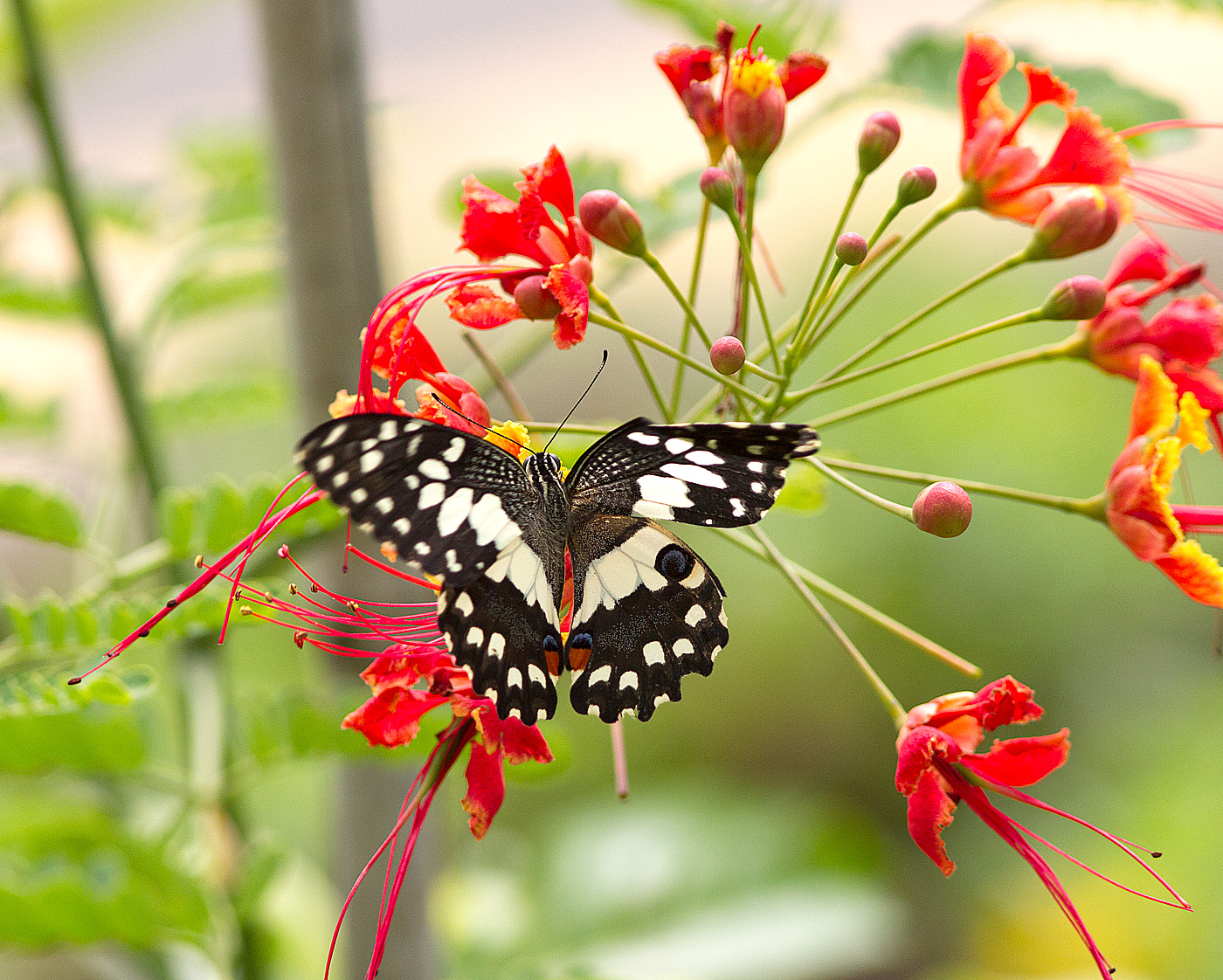
Photo credit: Jason Yong The Lime Butterfly (Papilio demoleus malayanus) gets its name from its host plants that are usually citrus species.
It is also a swallowtail butterfly but lacks the prominent tail that most swallowtails have. It is black with large yellow markings on the upperside, forming a band running from its forewings to hindwings. Its underside is mostly yellow with black markings.
| Calamansi 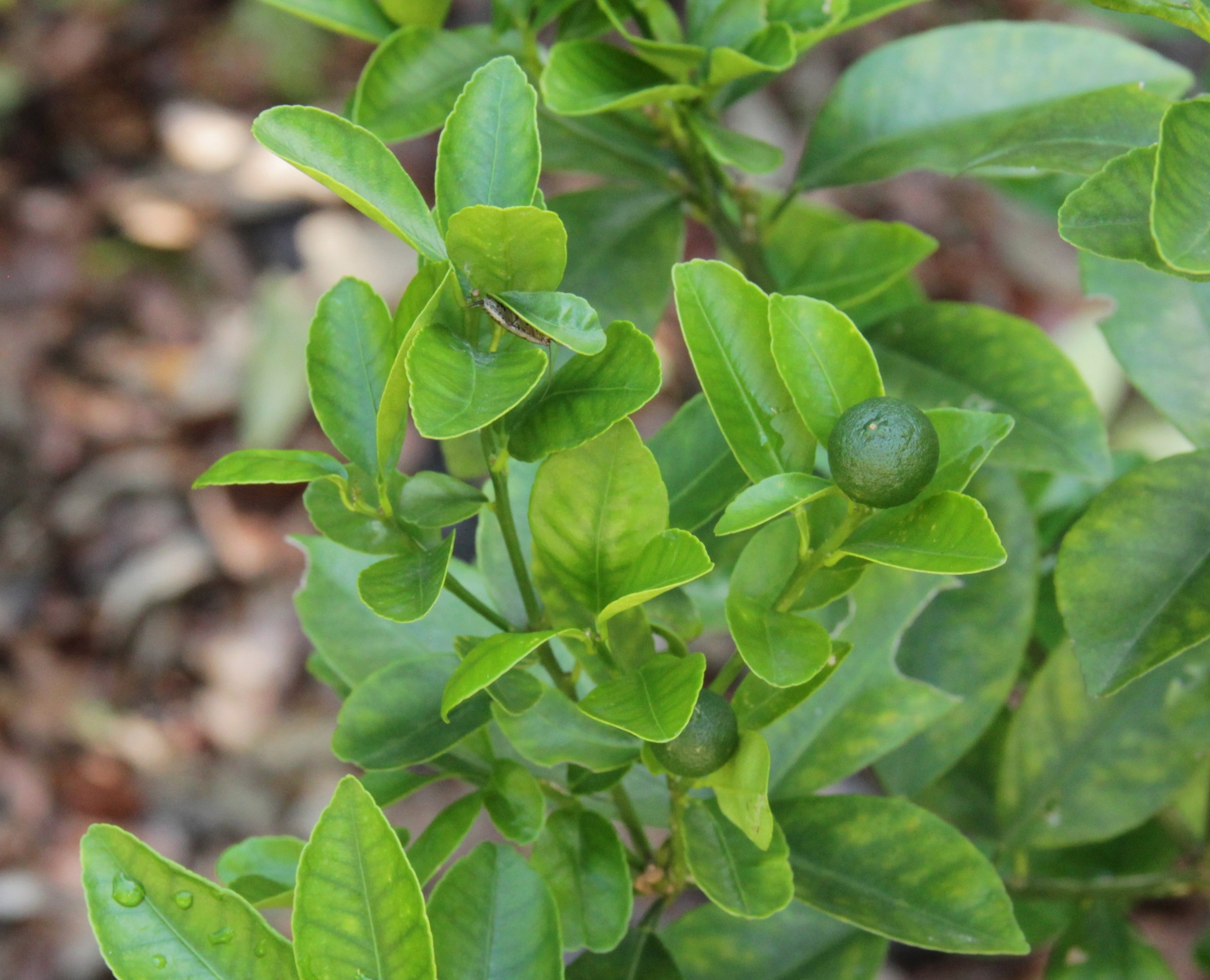
Photo credit: Arthur Ng The Calamansi (Citrus x microcarpa) grows to about 3 to 4 m tall, producing white to whitish-pink fragrant flowers. It grows best in moist to well-drained soil.
This citrus-scented plant not only brings a fresh aroma to your garden but it is also a food source for the caterpillars of the Lime Butterfly and its small rounded fruits can be eaten when they turn from green to light orange.
|
Painted Jezebel ---khew-sin-khoon.png?sfvrsn=4e157069_1)
Photo credit: Khew Sin Khoon The Painted Jezebel (Delias hyparete) is usually found flying among treetops, near the crowns of the trees.
Measuring about 7 to 8 cm, it bears a beautiful yellow and orange-red pattern at the underside of its hind wings, just like a painting.
| Malayan Mistletoe 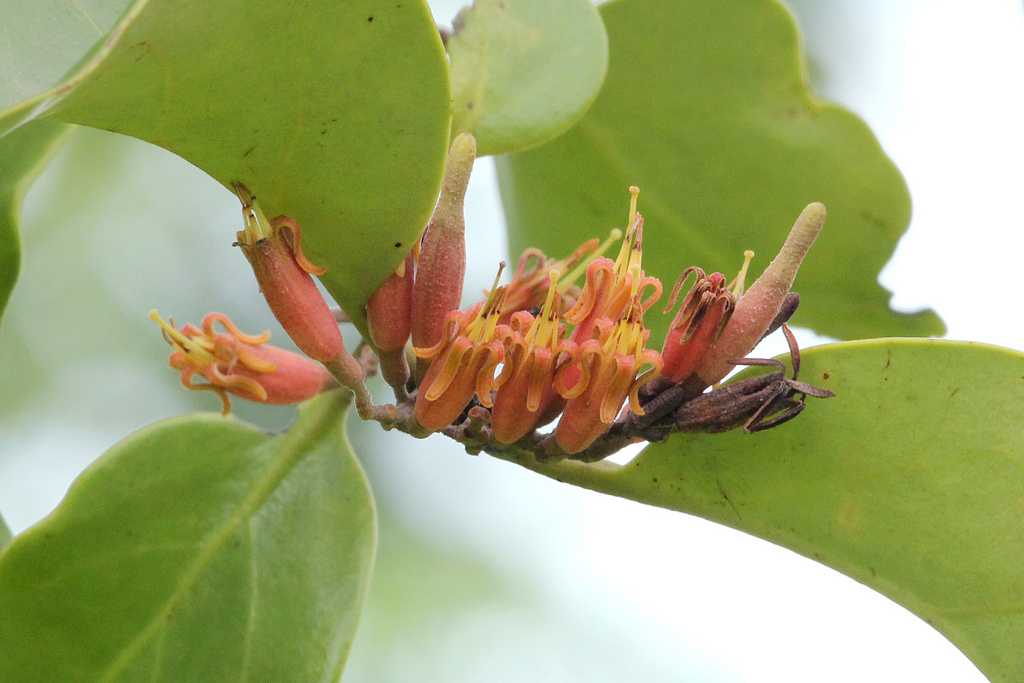
Photo credit: Teo Siyang The Malayan Mistletoe (Dendrophthoe pentandra) is the only known host plant of the Painted Jezebel and can be found widespread in Singapore.
A woody shrub that can grow up to 2 m, it bears attractive pink flowers and is commonly found growing on trees. Since it is a parasitic plant, regular maintenance of its growth is necessary to avoid deterioration of its host plant.
|
Plain Tiger ---khew-sk.jpg?sfvrsn=9efbb6a_1)
Photo credit: Khew Sin Khoon The Plain Tiger (Danaus chrysippus) is probably one of the more commonly spotted butterflies in Singapore. It has these rich orange forewings with broad black borders outlined with a series of white spots. There is also a less common orange form that has fully orange hind wings.
Measuring about 6.5 cm, it flies slowly while feeding on its favourite nectaring plants.
| Giant Milkweed 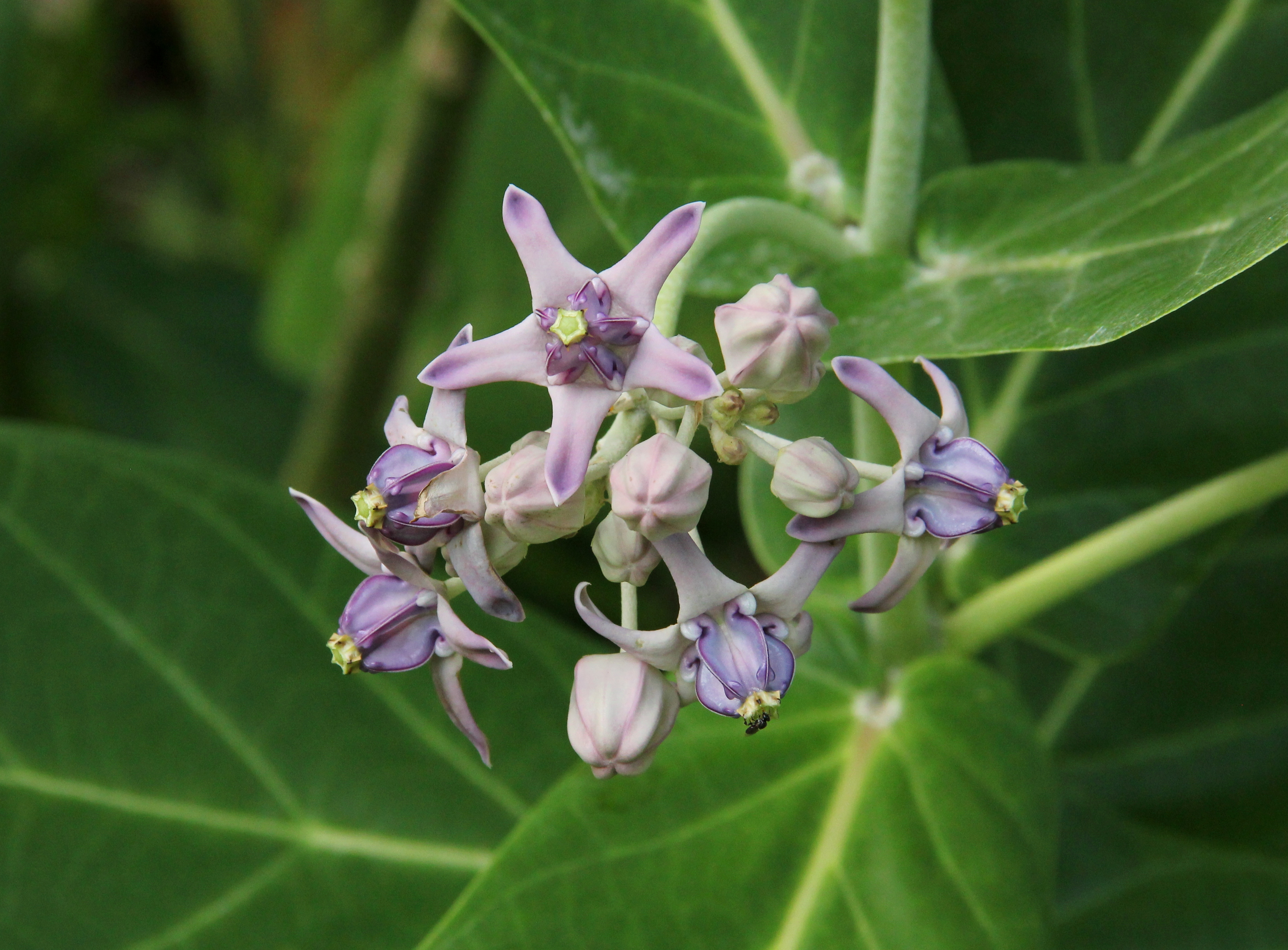
Photo credit: Arthur Ng The Giant Milkweed (Calotropis gigantea) is a medium-sized shrub that can grow up to 4 m tall when planted in the ground.
It torlerates drought and saline sites and can be propagated by seeds or cuttings. The caterpillars of the Plain Tiger feed on its sap-rich leaves that are unpalatable to predators.
The plant exudes a milky sap when damaged or cut. This may cause skin irritation in sensitive individuals.
|
Tawny Coster -06a---khew-sin-khoon.png?sfvrsn=f503c88c_1)
Photo credit: Khew Sin Khoon The Tawny Coster (Acraea terpsicore) is another commonly seen butterfly across Singapore. Measuing about 5.5 cm, it flies slugguishly in a fluttering manner around plants of the passion fruit family.
It bears a pair of deep orange wings with narrow black outer borders and black wing spots. On the underside, the male has wings that are salmon orange whereas the female spots pale tawny yellow wings.
| Stinky Passionflower .jpg?sfvrsn=386c08f2_1)
Photo credit: Jennie Tang Yurue As its name suggests, the Stinking Passionflower (Passiflora foetida) is a species of passionfruit and its leaves produce an unpleasant odour when crushed.
The plant is a climber that grows up to 6 m in height. It has large hairy leaves that serve as food for the Tawny Coster. It produces white flowers that are marked with a ring of radially oriented purple streaks and blossom open in the morning, closing by about noon.
Propagated by seeds, it grows best in full sun condition with lots of water.
|




---khew-sk.jpg?sfvrsn=c82c9667_1)









---khew-sin-khoon.png?sfvrsn=4e157069_1)

---khew-sk.jpg?sfvrsn=9efbb6a_1)

-06a---khew-sin-khoon.png?sfvrsn=f503c88c_1)
.jpg?sfvrsn=386c08f2_1)


